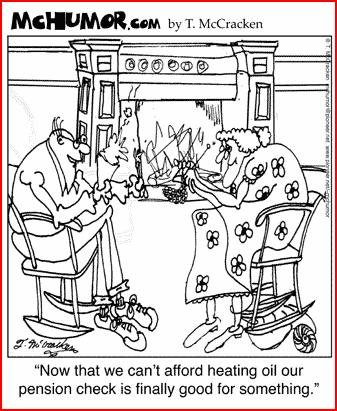Htown Harry
Thinks s/he gets paid by the post
- Joined
- May 13, 2007
- Messages
- 1,525
"Bear Market Isn’t a Disaster for Retirees" is the title of Scott Burns' column today. Bear Market Isn’t a Disaster for Retirees - Registered Investment Advisor
In a nutshell, he says research shows that SWR's can safely go up a percentage point or so when the market is down:
Said another way, a reversion to the mean rate of stock market returns can cut both ways, tending toward hurting the returns of the retire-at the-peak folks and helping those who start withdrawing at a time of market lows.
I take Mr. Burns with a grain of salt, so it's not likely that I'll jump on this particular bandwagon. But I do have a question.
Supposing one did buy into this idea, how would one know today's market's relative value? Burns gives no specific support for his statement that today's market is in the "third decile" of valuation.
Would traditional measures like the S&P 500's P/E or dividend rate be a sufficient indicator of the market's valuation? Or would it be some sort of technical indicator? The amount of government financial bailouts being doled out in a particular year?
In a nutshell, he says research shows that SWR's can safely go up a percentage point or so when the market is down:
"If prospective returns are higher in low valuation markets, perhaps retirees can safely increase their withdrawal rates. Research by financial planner Michael Kitces has shown that the usual 4 percent rule of thumb for initial withdrawal rates from retirement nest eggs can be increased in periods of low valuation. A typical 60/40 (equity/fixed income) portfolio, for instance, will only support a safe withdrawal rate of 4.4 percent in a high valuation market. But it will safely sustain a 5.7 percent withdrawal rate in a low valuation market..."
The link to Mr. Kitces' report is broken, but I understand the gist of it: Retire at the peak of the market and he calculates the SWR rate will be less than if you retire at a time that the market is at a low.
Said another way, a reversion to the mean rate of stock market returns can cut both ways, tending toward hurting the returns of the retire-at the-peak folks and helping those who start withdrawing at a time of market lows.
I take Mr. Burns with a grain of salt, so it's not likely that I'll jump on this particular bandwagon. But I do have a question.
Supposing one did buy into this idea, how would one know today's market's relative value? Burns gives no specific support for his statement that today's market is in the "third decile" of valuation.
Would traditional measures like the S&P 500's P/E or dividend rate be a sufficient indicator of the market's valuation? Or would it be some sort of technical indicator? The amount of government financial bailouts being doled out in a particular year?


